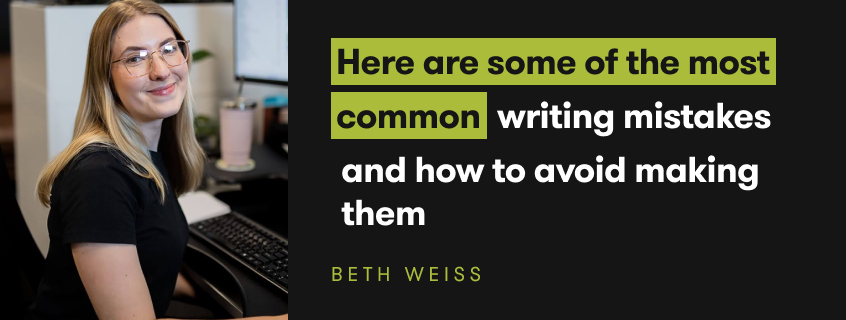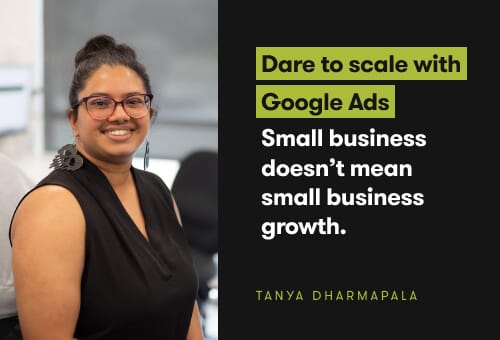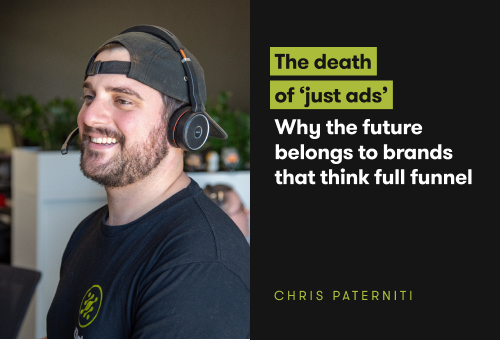
Here are some of the most common copywriting mistakes, and how to avoid making them


Everyone wants their writing to be impactful. But even the best copywriters don’t get it right every time. Let's explore some areas of weakness that can hold your copy back. By avoiding these you can create written content that truly resonates with your audience and drives results.
1. Lack of clear structure
A clear structure is key for guiding your reader and ensuring you cover the key talking points that communicate your overarching message.Without a good structure, readers can get lost, bored, and even bounce off the page.
How to stay on track
- Plan it out: Before you dive into writing, create a basic outline. Figure out the main points you want to cover and how they fit together.
- Use headings: Break up your text with clear headings to guide your readers and ensure your paragraphs follow a logical flow.
- Connect the dots: Make sure your ideas flow smoothly. Each point should build on the last, leading your reader to a clear conclusion.
2. Keyword stuffing

Keywords are important, but cramming them into your writing can backfire on you. Overusing keywords, also known as keyword stuffing, makes your content sound robotic and can even get you in trouble with search engines.
How to keep it feeling natural
- Blend it in: Use your keywords naturally throughout your text. Focus on writing something people would actually read.
- Prioritise: Choose a few main keywords and use them strategically where it makes sense to. Don't overdo them in any one place in the copy.
- People first: Write for real people, not just search engines. Good content is always the best SEO.
3. Making it too complicated
Let's face it: nobody likes reading copy that feels like a university essay. Using overly complex language or industry jargon can confuse your readers and make them lose interest. Your goal is to connect with your audience on a human level.
How to avoid
- Use plain English: Ditch the thesaurus and choose words that everyone understands.
- Short sentences: Write short, concise sentences that are easy to read and understand.
- Be direct: Get to the point. Don’t fill your copy up with too much fluff.Your readers appreciate it.
- Read it aloud: If it sounds awkward when you say it out loud, it probably needs work.
4. Being too salesy
Nobody likes a pushy salesperson. If your copy feels like a constant sales pitch, you'll likely turn people off. It's about building trust and showing value to the person reading, not constantly pushing your product or service.
How to avoid
- Show, don't tell: Instead of just listing features, explain how your product or service improves people's lives. What problems does it solve? What pain points of theirs does it address?
- Tell a story: People connect with stories. Share how your product helped someone, or set a scene where the reader can visualise themselves using that product or service.
- Be subtle: Don't overdo the calls to action. Let them come to the decision to buy on their own, but make sure your CTA’s are strategically placed for them to easily access at the same time.
5. Ignoring the brand voice
Every brand has its own personality, and it's the copy which can really bring this personality to life. When your writing is robotic and doesn’t consider the brand’s identity, it can be less engaging to read and won’t resonate with the audience. Consistency in injecting this brand personality into the copy is key to building a strong brand identity.
How to keep it consistent
- Define your personality: Figure out what kind of voice your brand has. Are you casual, humorous, serious, or somewhere in between?
- Stay on brand: Make sure your writing sounds the same regarding its personality everywhere – your website, social media, emails, the whole lot.
- Adapt wisely: It's okay to tweak your tone a little for different platforms, but always keep your brand's core personality in mind.
6. Neglecting the audience

Writing for no one in particular generally doesn’t work, as it's less impactful. To really connect with people, you need to understand who you're talking to. You are never going to be able to appeal to everyone, so really hone in on your target audience.
How to keep it feeling personal
- Do your homework: Learn everything you can about your target audience. What keeps them up at night? What do they want?
- Talk their talk: Use words and examples that resonate with them. Show you understand their world.
- Personal touch: When you can, tailor your content to be more personal to the reader.
7. Weak call to action (CTA)
Avoiding a weak CTA in copywriting is crucial because it fails to motivate the audience to take action, leading to lower engagement and missed opportunities for conversions. That said, you don’t need to be super pushy with your CTA, just strategic. Your CTA should be clear, exciting, and tell people what to do next.
How to keep them clicking
- Be clear: Tell them exactly what you want them to do.
- Highlight the benefits: Explain what they will gain by taking action.
- Make it stand out: Use visuals like buttons or different colours to draw attention.
8. Overlooking the details
Small mistakes can have a major impact. Typos, grammatical errors, and inconsistent formatting can significantly undermine the quality of your copy.
How to make sure you don’t miss anything
- Proofread carefully: Check for typos, spelling mistakes, and punctuation errors. Run your copy through a spelling and grammar check before signing off on anything.
- Keep it consistent: Make sure your style, formatting, and tone stay the same throughout.
- Get another pair of eyes: Have someone else review your work; a fresh perspective can be incredibly valuable. We're often too close to our own writing to spot mistakes effectively.
9. Not considering the platform

Consider the context of where your copy is going to be published or how it will be distributed. What works on your website might not fly on social media or in someone's inbox.
How to match your message to the platform
- Change it up: Write differently for different platforms. Keep it short and sweet on social media, and go into more detail on your website.
- Stay on top of trends: Stay on top of trends to keep your content relevant, engaging, and aligned with your audience's evolving interests.
- Incorporate visuals: Images and videos can enhance your message and make your content stand out, particularly on platforms like Instagram and Facebook.
10. Overloading with information
Overloading your copy with too much information can overwhelm readers, making it difficult for them to focus on the key message. Effective copywriting is about clarity and conciseness; by trying to cram in too many details, you risk diluting your main point, losing your audience's attention, and ultimately reducing the impact of your content. It's better to prioritise the most important information and present it in a clear, digestible way.
How to avoid
- Say it with fewer words: Focus on the most important stuff and cut out the fluff.
- Put the best stuff first: Tell people what matters most right away.
- Break it up: Use headings, bullet points, and short paragraphs to make it easier to read.
Mistakes happen… here’s some bad ones
Let's look at some famous marketing and copywriting fails.
Pepsi's ‘Live For Now’ Ad (2017)
Pepsi faced backlash for an ad featuring Kendall Jenner that appeared to trivialise social justice movements. The ad was widely criticised for being tone-deaf and trying to capitalise on serious issues for marketing purposes.
Burger King's "Women Belong in the Kitchen" Tweet (2021)
Burger King UK attempted to promote female chefs with the tweet "Women belong in the kitchen," intending to highlight gender disparity in the culinary industry. However, the controversial phrasing led to a backlash, overshadowing the campaign's positive message.
Woolies missing the mark for Anzac Day
In 2015, Woolworths faced backlash for a controversial Anzac Day campaign that featured their logo alongside the phrase "Fresh in Our Memories," leading to accusations of commercialising a sacred day of remembrance. The campaign was quickly pulled, and the company apologised for the misstep.
So, go forth and write better copy!
By steering clear of these common copywriting pitfalls and keeping all of these tips in mind, you're well on your way to crafting copy that truly connects with your audience. Effective copywriting is about more than just stringing words together; it's about understanding your readers, speaking their language, and building trust.
Remember, every word matters. By focusing on clarity, authenticity, and relevance, you can create content that not only informs but also inspires action and builds brand loyalty.















